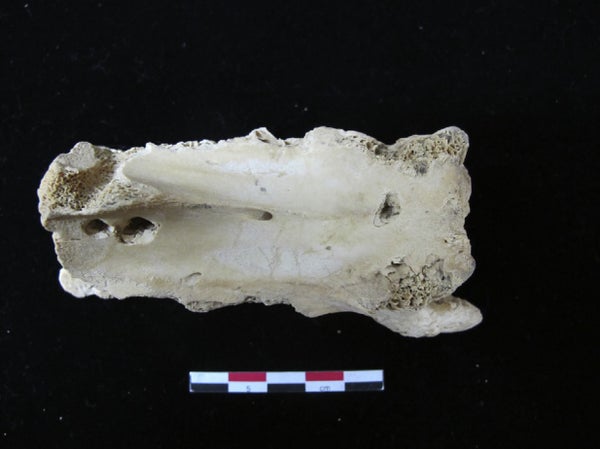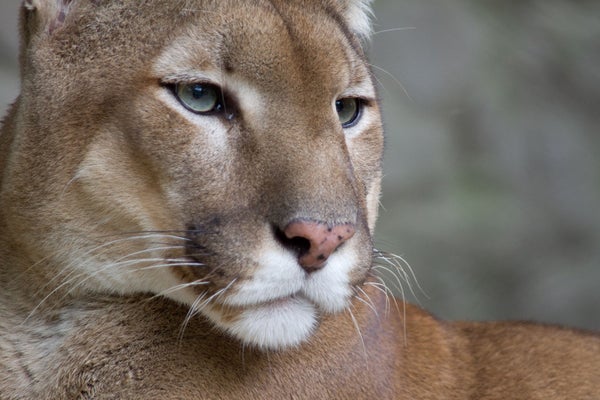This article was published in Scientific American’s former blog network and reflects the views of the author, not necessarily those of Scientific American
On supporting science journalism
If you're enjoying this article, consider supporting our award-winning journalism by subscribing. By purchasing a subscription you are helping to ensure the future of impactful stories about the discoveries and ideas shaping our world today.
Call a paleontologist an archaeologist and you may get an earful. The two disciplines are almost totally separate, with the archaeologist concerned with the history of human habits and the paleontologist focused on the comings and goings of life over vastly larger timespans. But there are places where the two disciplines intersect with each other. At various sites in Patagonia, for example, pumas left their table scraps interspersed with records of human history.
Pumas - or cougars or mountain lions or catamounts or whatever other title you prefer - are Ice Age survivors. They are among the big beasts that managed to survive while the sabercats, dire wolves, and other megafauna slipped into extinction. They also happen to be bone accumulators. Pumas in Patagonia, for example, sometimes drag the carcasses of young llamas and guanacos back to temporary shelters where they can eat in peace. These caves and crevices are the same sorts of places where our species took shelter in the past, and so bony puma leftovers have sometimes muddled the story of human habitation.
Take La Porfía, for example. At this exposed rock overhang in Patagonia, archaeologist Luis Borrero and colleagues write, researchers have found beds made of torn-up grass. Such snoozing spots have sometimes been attributed to humans, but the story's different at La Porfía - flattened grass, scat, and gnawed sheep bones indicated that pumas regularly used this place as a den. The grass beds were made by the cats, not humans, and this raises the possibility that some bedding sites attributed to ancient people may have instead been the spot for a cat nap.

Puma bitemarks on a guanaco vertebra from Cueva del Puma. From Borrero et al., 2016.
Then there are bones. From the end of the Pleistocene through the following millenia, Borrero and coauthors write, there are a dozen or more archaeological sites in Patagonia where both pumas and humans were present at different times. These sites often include the bones of prey - from extinct horses to introduced sheep, depending on the age of the deposit - but who brought the bones in? Both humans and pumas carried carcasses to these secluded places. Fortunately for archaeologists, however, pumas often create punctures and other tooth marks on skeletons as they go about defleshing bones, leaving their hallmarks behind.
Patagonia's pumas aren't the only cats to confound archaeologists. Lions have turned out to be bone accumulators, too, raising the possibility that some bonebeds attributed to hungry humans were really made by the big cats. Leopards have been scattering bones of their kills in caves for millions of years, too, and, for a time, their leftovers were misinterpreted as evidence that early humans were little more than killer apes. The cats did not do this to confuse us. They simply lived their lives, leaving a fossil trail that has only underscored the fact that studying and retelling human history cannot focus on our species alone. Wherever we've been, cats have been right there with us.
Reference:
Borrero, L., Martin, F., Prevosti, F. 2016. Taphonomy and the roles of pumas (Puma concolor) in the formation of the archaeological record. Quaternary International. doi: 10.1016/j.qaunt.2016.04.011
